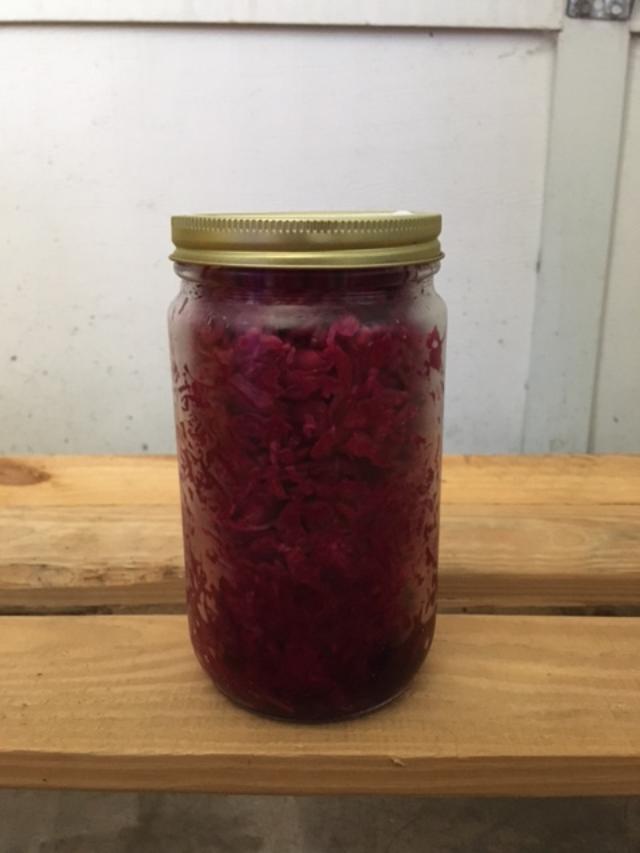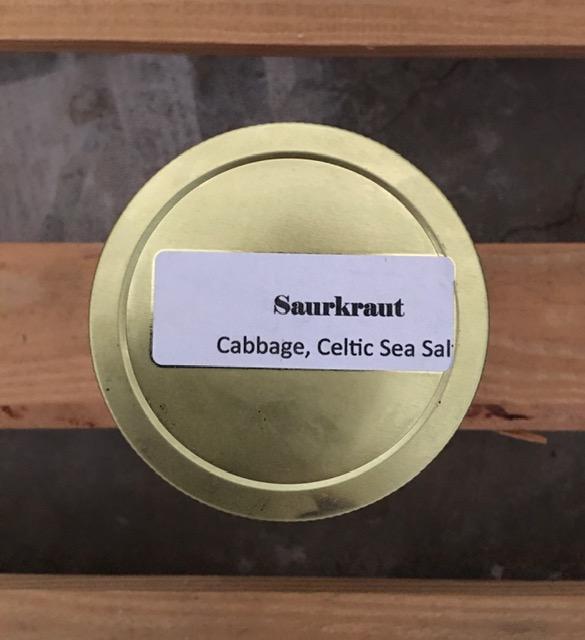Description
What is Sauerkraut?
Basically, sauerkraut is shredded cabbage fermented in its own juice with or without a culture starter or a salt water brine. Many other vegetables and spices can be added for extra flavor and variety, but cabbage is usually the main ingredient because the leaves contain high amounts of naturally occurring cultures that help it to ferment.
Raw Sauerkraut’s Benefits to Health – Packed With Enzymes
Our digestive functions naturally provide saliva and digestive enzymes to break down our food into usable nutrients, but over time eating foods low in enzymes reduces one’s own digestive enzyme reserves.
Raw sauerkraut is a food packed with enzymes because it is not heated or pasteurized, like some commercial brands. Enzyme-rich foods help you to digest your meals so you get the maximum amount of nutrition and energy out of them.
A jar of cultured vegetables is an enzyme factory and only a small amount of sauerkraut produces more than enough for the proper digestion of the foods we eat. It can be an especially helpful condiment for diets high in cooked foods dairy and animal proteins.
Contains Lactobacilli, the Friendly Bacteria
In addition to enzymes, the friendly microbial bacteria that exist inside your digestive tract are particularly helpful at converting more nutrients, vitamins and minerals out of the foods you eat, making them more bio-available to the body to use as nourishment.
This is why it is very important to maintain a balanced body ecology. You should have at least 80% alkaline friendly bacteria and 20% of the other acidic microorganisms, like candida albicans, which are actually helpful to the health of the intestinal tract in small amounts.
Cultured veggies are a true longevity food and essential part of a superhealthy diet plan to cleanse and re-establish a healthy intestinal ecosystem.
There is an incredibly diverse array of beneficial bacteria found in cultured krauts and they are known to increase in volume the longer they ferment.
The fermentation process involved in making sauerkraut creates an acidic environment in which these friendly flora can reproduce and proliferate. This is accomplished by transforming the lactose and other sugars in the vegetables to lactic acid, which in turn gives birth to different strains of the bacteria called Lactobacilli, including Leuconostuc, Lactobacillus and Pediococcus.







Reviews
There are no reviews yet.